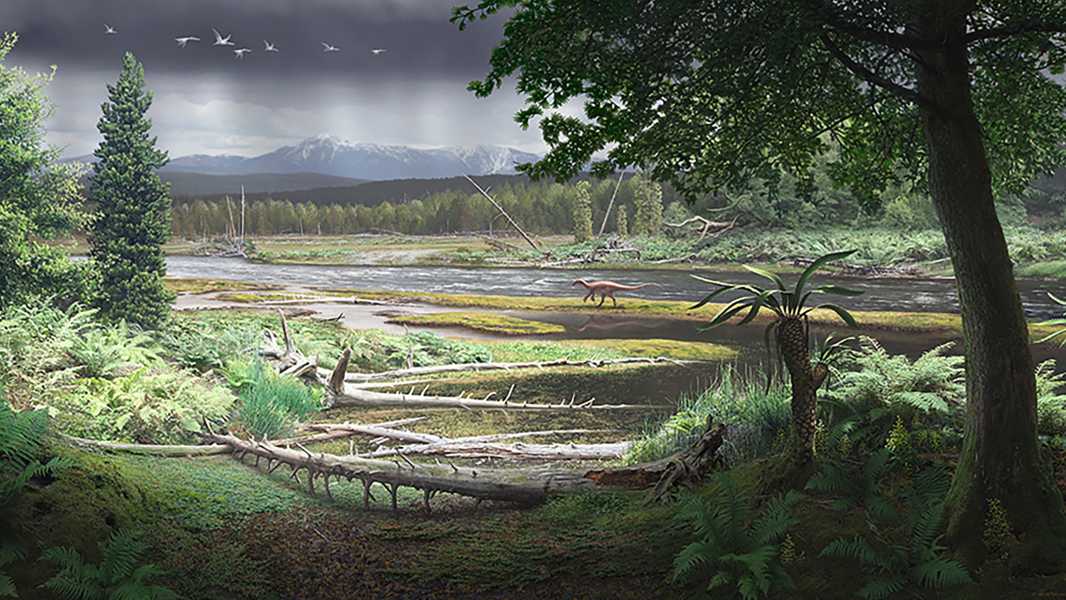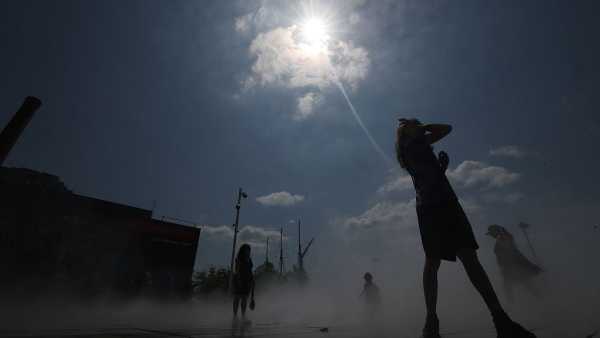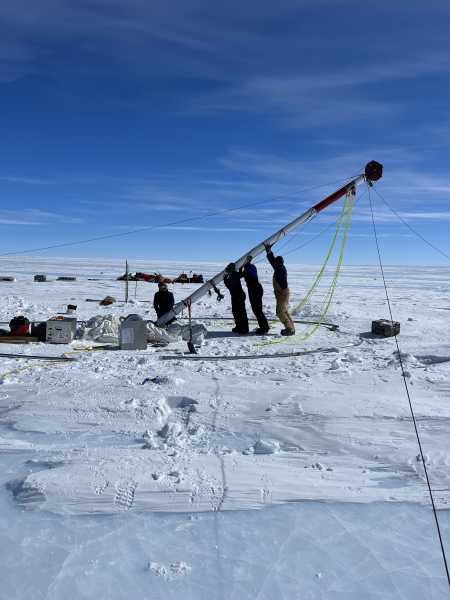
Reconstruction of an Early Cretaceous cool temperate rainforest and riverine landscape in what is now southern Australia. (Image credit: Artwork by Robert Nicholls. Published in Korasidis & Wagstaff (2025) Alcheringa. Distributed under the terms of the Creative Commons Attribution licence.)
Australia is relatively isolated today, but about 120 million years ago, the island sat on the Arctic Circle and formed a huge landmass along with Antarctica. Dinosaurs roamed the land at the time – and thanks to new research, we now understand what their ecosystem looked like.
New visualizations show that “polar dinosaurs” roamed cool-temperate forests crisscrossed by rivers and thick with ferns. These dinosaurs included small ornithopods — plant-eating dinosaurs with beaks and jaws full of teeth — and small theropods, which were primarily carnivorous, walked on two legs, and often had feathers, one of the study’s authors wrote in The Conversation.
“What we now know as Victoria was once located above the Arctic Circle, up to 80 degrees south of the equator, and shrouded in darkness for months at a time,” writes co-author Vera Korasidis, a professor of environmental geoscience at the University of Melbourne and a research associate at the Smithsonian Institution’s National Museum of Natural History. “Despite these harsh conditions, dinosaurs thrived here, leaving behind evidence of their existence at a variety of paleontological sites.”
The amount of sunlight reaching the Antarctic Circle has remained stable over the eons, but the climate during the Cretaceous (145 to 66 million years ago) was considerably milder than today, with average temperatures 11 to 25 degrees Fahrenheit (6 to 14 degrees Celsius) warmer than today. The Early Cretaceous (140 to 110 million years ago), in particular, stands out as one of the warmest periods in the last 500 million years of Earth’s history, Korasidis notes, barring the presence of polar ice caps.
Palaeontologists have been studying dinosaur-bearing rocks in the southern Australian state of Victoria for decades, but they are also analyzing microscopic spores and pollen grains that may have belonged to plants that lived near the South Pole during the early Cretaceous period, Korasidis said.
In the new study, Korasidis and co-author Barbara Wagstaff, a pollen and spore specialist at the University of Melbourne, examined nearly 300 pollen and spore samples from 48 sites along the Victorian coast. The samples, which range from 130 million to 110 million years old, shed light on the evolution of the forests and floodplains where dinosaurs lived, Korasidis said.
Sourse: www.livescience.com





